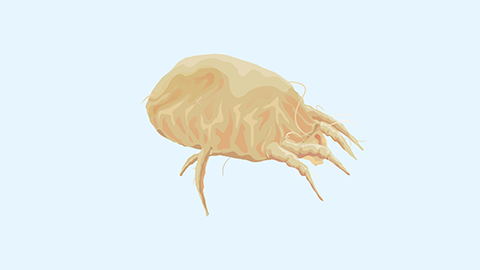What are the early signs of a brain-eating amoeba invading the brain?
Naegleria fowleri, commonly known as the brain-eating amoeba, typically refers to a type of amoeba. The precursors of amoeba invading the brain generally include symptoms such as headache, fever, olfactory abnormalities, nausea, vomiting, neck stiffness, and changes in mental status. If concerned, it is recommended to seek medical consultation in advance. Detailed analysis is as follows:

1. Headache and Fever: In the early stages, persistent headaches frequently occur, with pain locations often unfixed and increasing in severity. These symptoms are accompanied by elevated body temperature, which can reach 38°C or higher. The fever and headache are caused by brain inflammation triggered by the invasion of the amoeba, which stimulates the nerves and the body's temperature regulation center.
2. Olfactory Abnormalities: Since the amoeba enters the brain through the nasal cavity along the olfactory nerve, early olfactory function may be affected. Patients may experience reduced sense of smell, decreased sensitivity to odors, or perceive non-existent odors, such as foul smells. This is an early manifestation of nervous system involvement.
3. Nausea and Vomiting: Brain inflammation irritates the intracranial nerves and the vomiting center, causing nausea followed by vomiting. The vomiting is often projectile in nature, differing from vomiting caused by common gastrointestinal discomfort. Headache symptoms do not alleviate after vomiting, and the frequency of episodes increases as the condition progresses.
4. Neck Stiffness: As the inflammation spreads, the meninges become irritated, leading to muscle spasms in the neck and restricted movement. Patients may find it difficult to touch their chest with their chin when bending forward, and neck pain intensifies when turning the head. This is a typical presentation of meningeal irritation signs, indicating worsening brain pathology.
5. Mental Changes: Throughout the progression of the disease, patients' mental states may change. Initially, they may exhibit restlessness and significant mood fluctuations. Subsequently, they may gradually develop drowsiness and confusion, showing delayed reactions to the surrounding environment. In severe cases, they may fall into a coma, reflecting serious impairment of brain function.
If one or more of the above symptoms appear, especially with a recent history of exposure to contaminated water sources, immediate medical evaluation is necessary. In daily life, avoid swimming or washing the face in untreated ponds, rivers, or other bodies of water. After contact with natural water sources, promptly clean the nasal cavity and use clean water to rinse the nasal passages to reduce the risk of infection.







